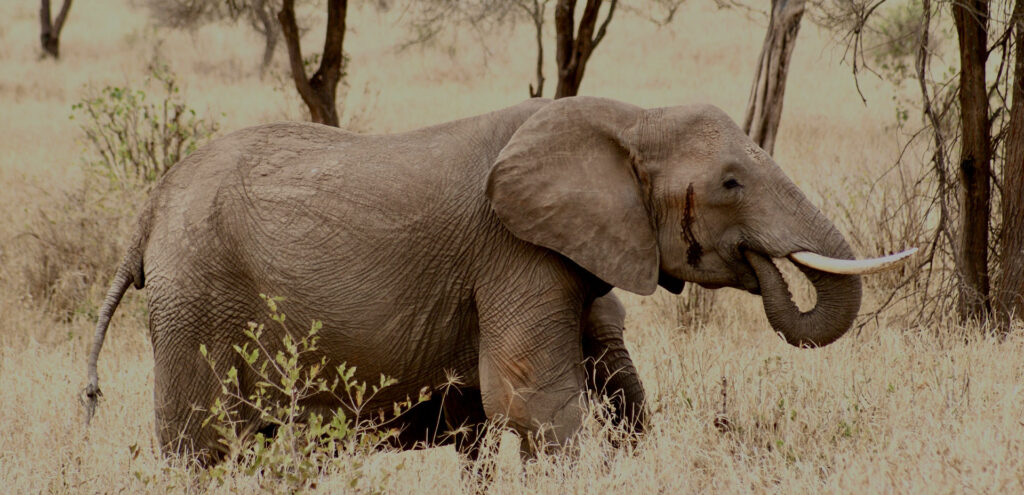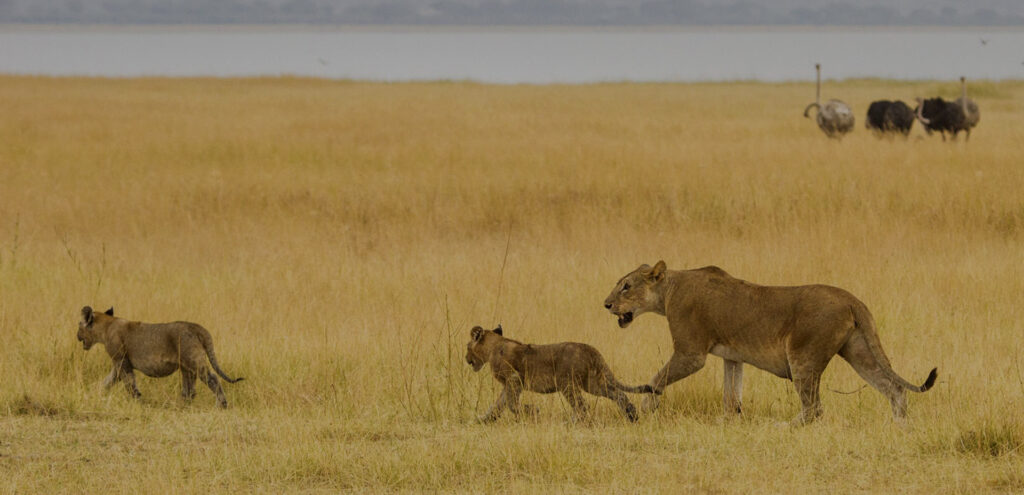Tarangire National Park
Tarangire National Park in Tanzania’s Manyara Region spans an enchanting 2,600 km². Named after the Tarangire River, the park features plains, swamplands, and flood fields that nourish the river. It is home to diverse fauna, including elephants, lions, cheetahs, leopards, and zebras, supported by nine vegetative zones. The northern region is notable for its ancient baobab trees, acacia woodlands, and palm tree forests.
During the dry season, the Tarangire River is a vital water source, attracting large populations of elephants, wildebeest, zebras, and other wildlife. The park boasts over 500 species of birds, including green wood hoopoes and yellow-collared lovebirds, as well as African pythons and tree-climbing leopards. Tarangire is a treasure of Africa, offering breathtaking vistas of savannahs, baobab trees, acacia stands, and expansive elephant populations. Discover the pinnacle of Tarangire with a World Wild Africa Safari!


Tarangire National Park Facts:
- Traditional safari experience
- Migration of elephants
- Huge baobab trees
- Exciting walking excursions
- Four of the Big Five (excluding rhinoceros)
Reasons for Selecting Tarangire National Park:
- Birdwatcher’s sanctuary with over 550 bird species
- Spectacular wildlife observing near the Tarangire River during the dry season
- Potential for year-round visits with permanent residents like vast elephant populations
- Ideal for Tanzania Safari Packages due to its proximity to the Serengeti, Ngorongoro Conservation Area, and Arusha
What Distinguishes Tarangire National Park?
- Named after the Tarangire River, the park’s principal water source
- The sole location in Tanzania to observe the gerenuk
- Numerous baobab trees and rare sightings of pythons and tree-climbing leopards
Accessing Tarangire National Park:
- Roadways: Approximately 2-3 hours’ travel from Arusha, the starting point for Northern circuit destinations. Public transportation services are available.
- Airlines: Charter flights from Kilimanjaro International Airport to the Tarangire aerodrome, with arrivals from Arusha or Kilimanjaro.
Health and Safety at Tarangire National Park:
- Staff and tour operators ensure a safe and pleasant visit
- Most encounters will be with park staff, lodge employees, or fellow visitors
- Criminal activity directed at visitors is exceedingly rare in Tanzania’s national parks
Food at Tarangire National Park:
- Abundant organic dishes prepared by chefs, including international meals
- Local foods made with corn(ugali), sorghum, wheat (chapati, mandazi) and cassava, as well as beef, lamb, fish, poultry are prepared. If you have any food allergies, please let the chef know
- Samosas with vegetable or meat fillings and leafy greens are example served as appetizers
- Camps and lodges provide heated outdoor meals and a variety of African dishes for an authentic Out of Africa experience

